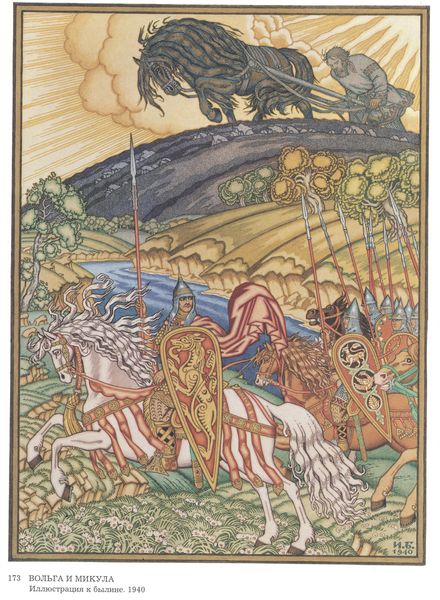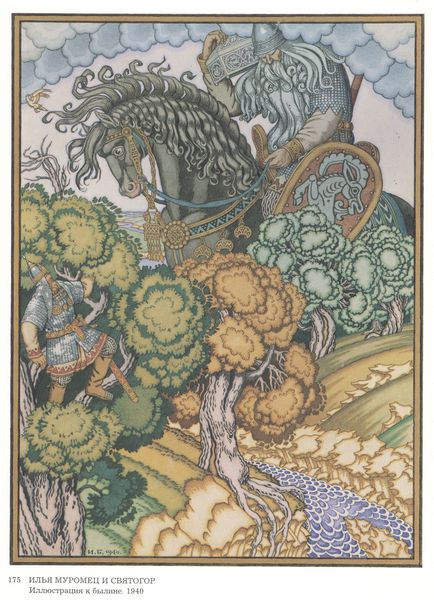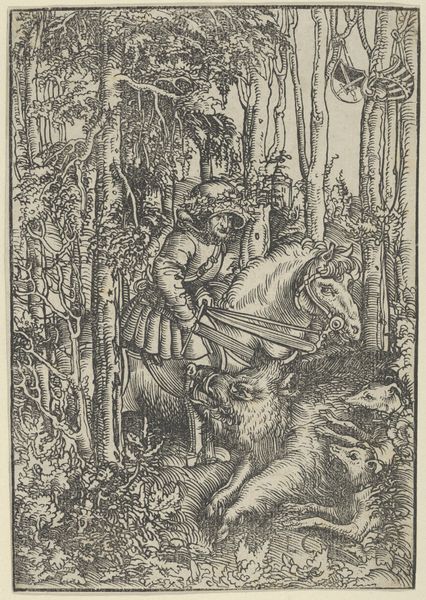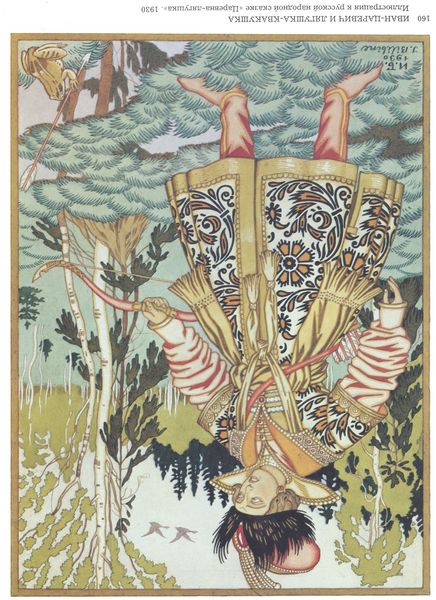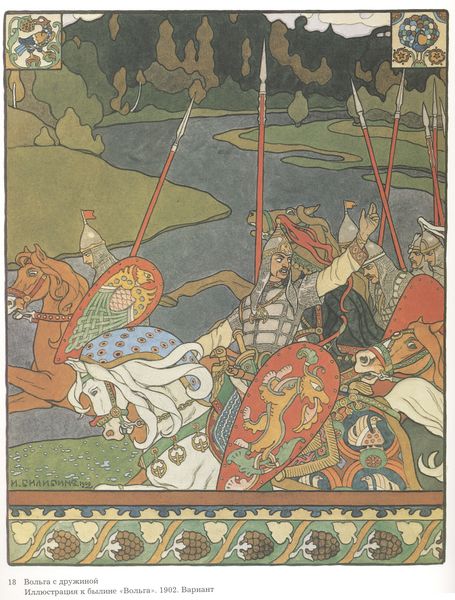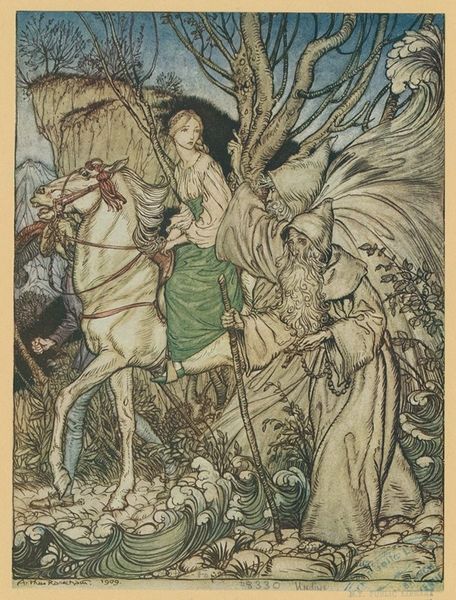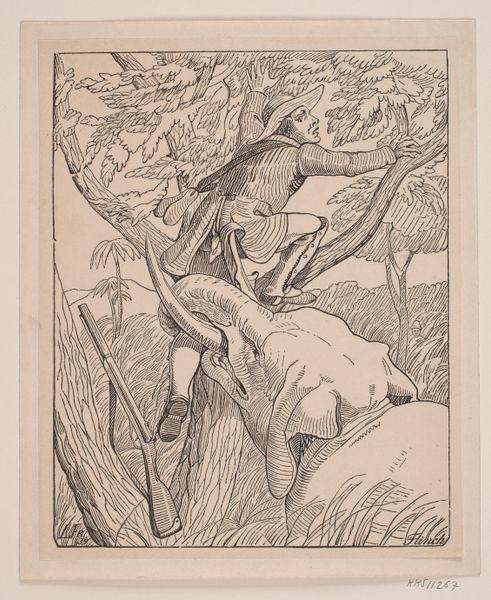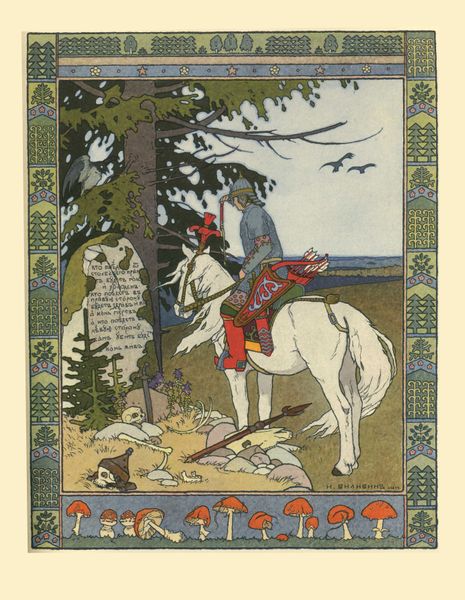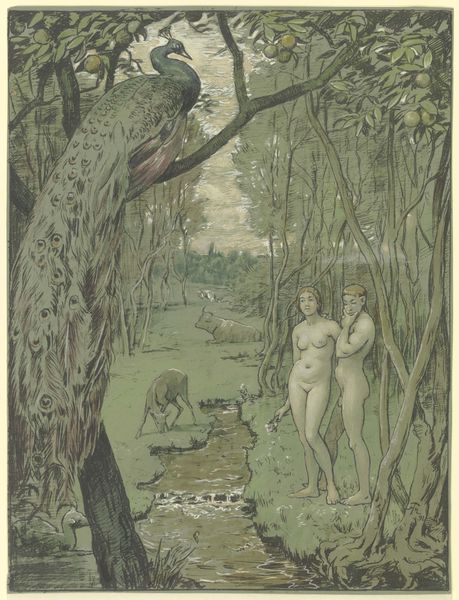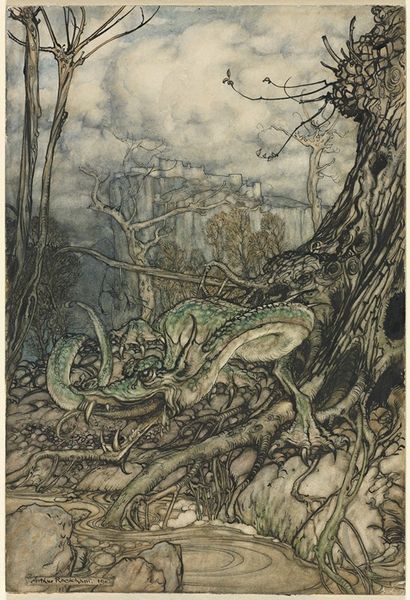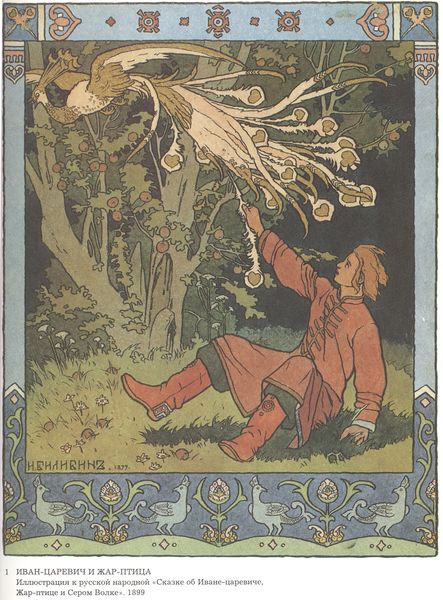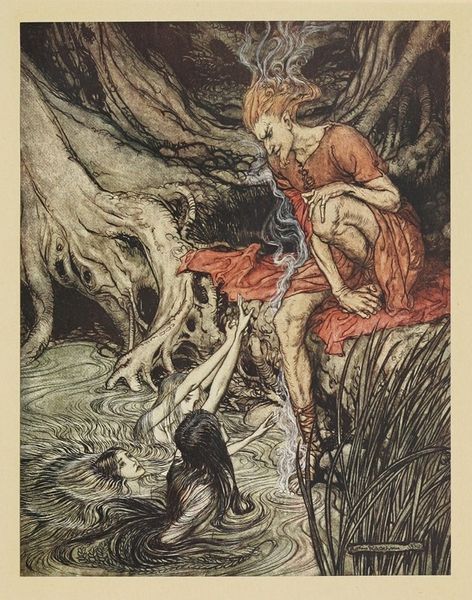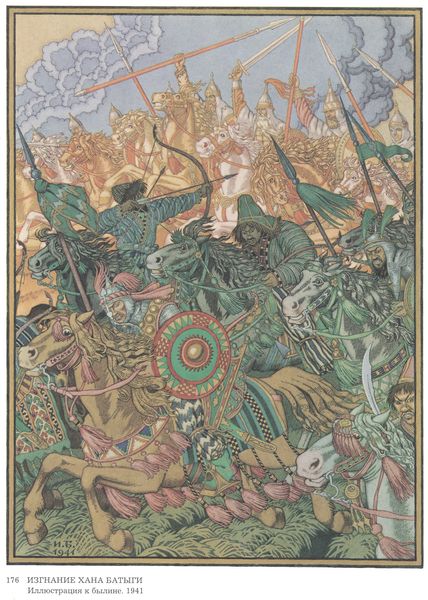
Copyright: Public domain
Editor: So, this is Ivan Bilibin’s "Illustration for the epic 'Ilya Muromets and Nightingale the Robber,'" made in 1940. The vibrant watercolor really pops, but it’s also quite theatrical, almost like a stage set. What historical or cultural context should we be aware of when looking at this piece? Curator: It’s important to consider this illustration within the broader context of the revival of Russian folklore in the late 19th and early 20th centuries, especially its resurgence in popular visual culture and state propaganda. How do you think Bilibin’s choices relate to the social function of epic tales like this? Editor: I see how the visual style romanticizes the past, turning this battle between good and evil into a scene from a fairy tale, very safe and educational for kids. So the story wasn’t just entertaining; it had a purpose to inspire nationalism? Curator: Precisely. Think about how this image circulated – probably as a print in a children's book, placing it directly into the socialisation process, shaping their worldview and constructing a romanticised view of the national identity. Do you think it challenges or reinforces existing power structures? Editor: Well, depicting a strong Russian hero certainly seems to reinforce a specific vision of strength and heroism aligned with the dominant culture, downplaying alternative interpretations or challenges to authority. Curator: Exactly. Even seemingly innocent illustrations can reveal complex ideologies and social dynamics. It's a reminder to analyze art not in isolation but as a participant in shaping our understanding of the world and national narrative. It raises a significant point about art’s public role during and after the Stalin era. Editor: This really sheds a light on how even illustrations can function as cultural tools!
Comments
No comments
Be the first to comment and join the conversation on the ultimate creative platform.
